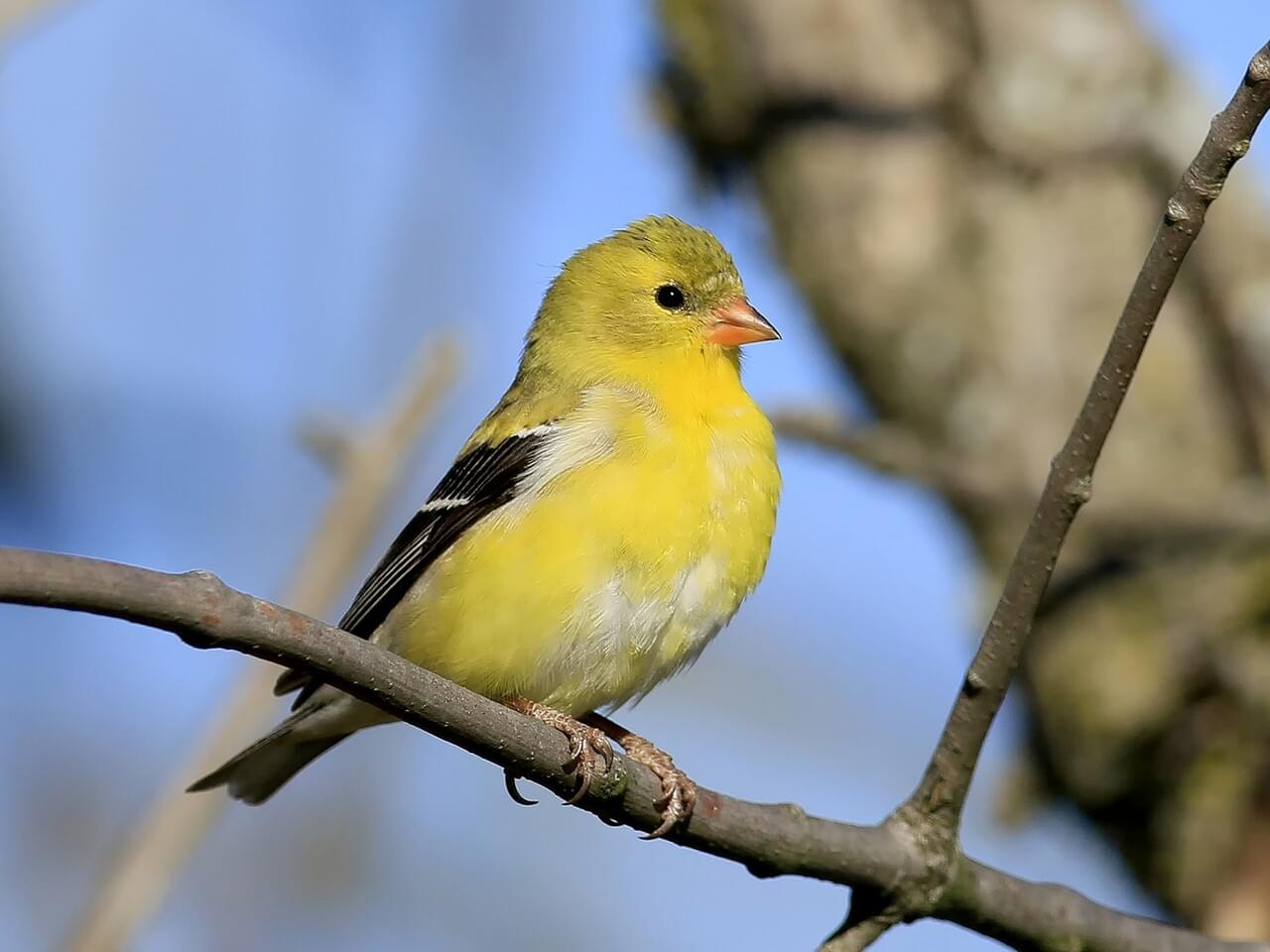 Photo ©
Keith
Photo ©
Keith
American Goldfinch
Regional Species
This handsome little finch, the state bird of New Jersey, Iowa, and Washington, is welcome and common at feeders, where it takes primarily sunflower and nyjer. Goldfinches often flock with Pine Siskins and Redpolls. Spring males are brilliant yellow and shiny black with a bit of white. Females and all winter birds are more dull but identifiable by their conical bill; pointed, notched tail; wingbars; and lack of streaking. During molts they look bizarrely patchy.
Range

Habitat
Weedy fields, open floodplains, and other overgrown areas, particularly with sunflower, aster, and thistle plants for food and some shrubs and trees for nesting. Goldfinches are also common in suburbs, parks, and backyards.
Food
Goldfinches eat seeds almost exclusively. Main types include seeds from composite plants (in the family Asteraceae: sunflowers, thistle, asters, etc.), grasses, and trees such as alder, birch, western red cedar, and elm. At feeders prefers nyjer and sunflower.
Behavior
American Goldfinches are active, acrobatic finches that balance on the seedheads of thistles, dandelions, and other plants to pluck seeds. They have a bouncy flight during which they frequently make their po-ta-to-chip calls. Although males sing exuberantly during spring, pairs do not nest until mid-summer, when thistles and other weeds have gone to seed. Goldfinches do not join other songbirds mobbing predators.
Nesting
The nest is an open cup of rootlets and plant fibers lined with plant down, often woven so tightly that it can hold water. The female lashes the foundation to supporting branches using spider silk, and makes a downy lining often using the fluffy “pappus” material taken from the same types of seedheads that goldfinches so commonly feed on. It takes the female about 6 days to build the nest. The finished nest is about 3 inches across on the outside and 2-4.5 inches high.
Appearance
Typical Sound

© Jay McGowan / Macaulay Library
Size & Shape
A small finch with a short, conical bill and a small, head, long wings, and short, notched tail.
Color Pattern
Adult males in spring and early summer are bright yellow with black forehead, black wings with white markings, and white patches both above and beneath the tail. Adult females are duller yellow beneath, olive above. Winter birds are drab, unstreaked brown, with blackish wings and two pale wingbars.
Plumage Photos
Similar Species
Evening Grosbeaks are about twice the size of a goldfinch, with a huge beak and large wing patches rather than wingbars. Pine Siskins have coarse brown streaks on breast and back, a more slender bill, and yellow only on a small region of the wing. Female Lesser and Lawrence's goldfinches have a solidly dark tip to the tail, whereas female American Goldfinches have white edges to the tail feathers. Lesser Goldfinches have yellow instead of white under the tail. Lawrence's Goldfinches have yellow instead of white wingbars. Many warblers are bright yellow, but they all have thinner bills and a more horizontal posture than goldfinches and are very rarely seen at bird feeders.
Did you know?!
- Paired-up goldfinches make virtually identical flight calls; goldfinches may be able to distinguish members of various pairs by these calls.
- When Brown-headed Cowbirds lay eggs in an American Goldfinch nest, the cowbird egg may hatch but the nestling seldom survives longer than three days. The cowbird chick simply can’t survive on the all-seed diet that goldfinches feed their young.
- American Goldfinches are the only finch that molts its body feathers twice a year, once in late winter and again in late summer. The brightening yellow of male goldfinches each spring is one welcome mark of approaching warm months.













